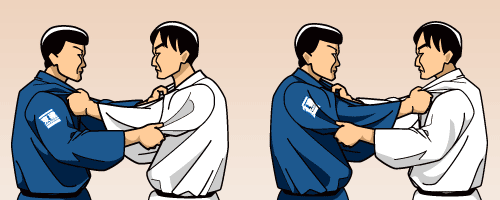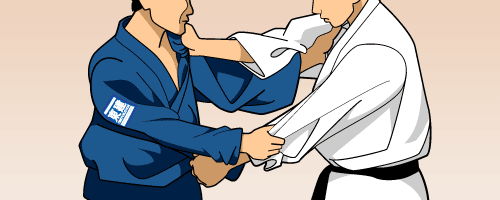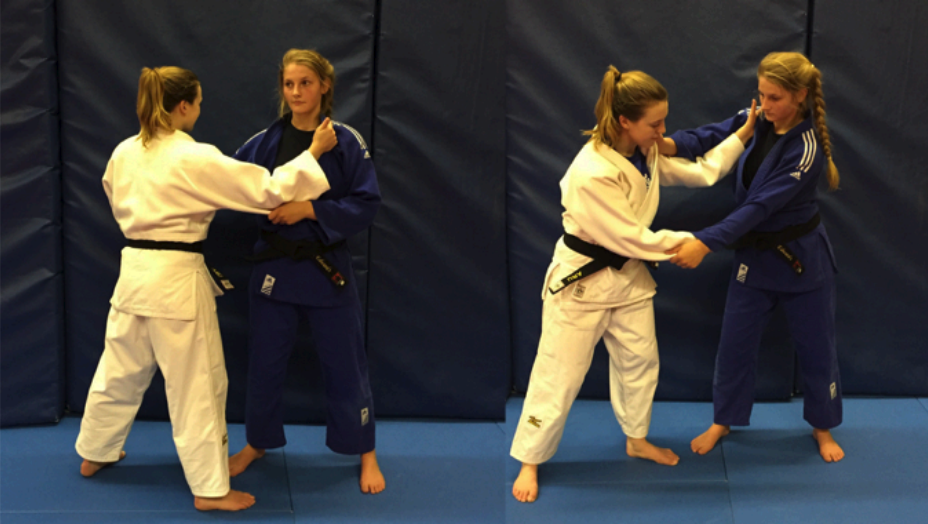Teaching My Teammates: Judo Terms & Concepts (4): Dai Ikkyo 1
New Terms
Dai Ikkyo (第一教), the first teaching
Dai (第): Number
I (一): 1
Kyo (教): Teaching
Deashibarai (出足払), forward (advancing) foot sweep
De (出): protruding; short for “deta” –the one going forward
Ashi (足): leg or foot
Harai or barai (払): to dust off or sweep
Hizaguruma (膝車), knee wheel
Hiza (膝): knee
Kuruma or guruma: wheel, car
Sasae tsurikomi ashi (支釣込足), foot-stop lift-pull
Sasae (支): to hold at bay
Tsuri (釣): the lifting motion to hook a fish on a rod
Komi (込): bundling together, pulling in
Ashi (足): leg or foot
Ukigoshi (浮腰), floating hip
Uki (浮): rise, float
Koshi or goshi (腰): hip
Aiyotsu (相四つ), symmetrical grips/stances
Ai (相): mutual, together
Yotsu (四つ): four (grips/feet)
Kenkayotsu (喧嘩四つ), asymmetrical grips/stances
Kenka (喧嘩): noisy, brawl
Yotsu (四つ): four (grips/feet)
Pronunciation Changes?
A quick note about the Japanese language. Some consonant sounds are interchangeable and vary based on the word. Examples of this would be:
Koshi and goshi both mean “hip”
Harai and barai both mean “sweep”
Kuruma and guruma both mean “car” or “wheel”
For a non-Japanese Judo student learning the Japanese terminology, it’s not super important to understand why the pronunciation changes. Just recognize that sometimes it does. If that confuses you, too bad: call the Japanese Prime Minister to complain. Don’t @ me, bro.
Aiyotsu vs. Kenkayotsu
When discussing any nagewaza (throwing technique), context matters. A judoka (judo player) must recognize the position they are in with respect to the opponent.
Aiyotsu is a position where the two players have matching grips and the forward, dominant foot is the same for both players. In aiyotsu (right vs. right, or left vs. left), the two players’ centers of mass are directly opposite of each other. The shoulders and hips both face midline, often obliquely parallel to one another. This even position does not offer distinct advantages to either player. In an aiyotsu engagement, the majority of the time one player is aiming to force the other player to stand fully “square” with neither foot in front of the other before executing a nagewaza.
Glossary of Judo terminology: Aiyotsu (Same grip used by both persons) | Judo Channel | Token Corporation. Www.judo-Ch.jp. https://www.judo-ch.jp/english/dictionary/terms/aiyotu/
Kenkayotsu (right vs. left) is a position where one player has their left foot forward and the other has their right foot forward. When grips are taken, this generally results in asymmetrical gripping and more space between the front surfaces of each player as often one or both players blade their body–the side-body faces the opposite player as opposed to the front surface. Often, the attacking player must cross a portion of their body in front of their opponent to execute a nagewaza.
Glossary of Judo terminology: Kenka yotsu (Asymmetrical grips by the two opponents) | Judo Channel | Token Corporation. (2024). Judo-Ch.jp. https://www.judo-ch.jp/english/dictionary/terms/kenkayotu/
Left: Aiyotsu (RvR)
Right: Kenkayotsu (LvR)
Challis, B. (2018). Chapter 7: An Analysis of the Tactical Component of Lightweight Women’s Judo [Review of Chapter 7: An Analysis of the Tactical Component of Lightweight Women’s Judo]. Research Gate, 123–157. Research Gate. https://www.researchgate.net/publication/328420775_Chapter_7_An_Analysis_of_the_Tactical_Component_of_Lightweight_Women's_Judo
Dai Ikkyo (第一教)
The Gokyo no Waza (the five teachings of (throwing) techniques) is split into five groups of nage waza (throwing techniques). This week we’ll look at the first four throws of the dai ikkyo (the first teachings): deashibarai, hizaguruma, sasae tsurikomi ashi, and ukigoshi.
Deashibarai
English Name: forward (advancing) foot sweep
Classification: ashi waza (leg/foot technique)
Kuzushi direction: forward or backward, then downward
To execute deashibarai, uke (the person being thrown) must be stepping or be made to step by tori (the person performing the throw). Essentially, uke must lift their lead foot and begin moving their center of mass either forward or backward. Their base is momentarily compromised and only one foot (uke’s rear foot) is in firm contact with the ground. Before uke’s lead foot touches the ground again, tori uses their forefoot like a hockey stick to sweep uke’s hindfoot to tori’s midline, plucking uke’s base out from underneath them before it can be formed by making contact with the ground. This causes uke to stumble or begin falling. Tori then pulls uke’s center of mass downward where uke has no base, resulting in uke falling to the floor.
The “hockey stick” of tori’s forefoot on uke’s hindfoot.
Kano, J. (1994). Kodokan Judo. p.60. Kodansha International.
Basic, Static Demonstration
Detailed Instruction
Deashibarai in Modern Judo Competition
Hizaguruma
English name: knee wheel
Classification: ashi waza
Kuzushi direction: forward and diagonal
Tori takes advantage of uke’s forward motion by placing the sole of their foot just south and outside of uke’s kneecap as a tripwire. Tori’s leg is almost straight. Tori then pulls hard, turning their body in the direction of uke’s motion and pulling uke up and over the stopping foot and then slightly downward. This causes uke’s center of mass to be pulled over a blocked base of support - causing the fall.
Basic, Static Demonstration
Detailed Instruction
Hizaguruma in Modern Judo Competition
Sasae Tsurikomi Ashi
English name: foot-stop lift-pull
Classification: ashi waza
Kuzushi direction: forward and diagonal
This nagewaza is similar to hizaguruma. The footwork is nearly identical, though the position of tori’s tripwire (their foot) is placed just above uke’s ankle as opposed to the lateral side of the kneecap. Shorter-legged players may prefer hizaguruma whereas longer-legged players may prefer sasae tsurikomi ashi, though this is not always the case.
Basic, Static Demonstration
Detailed Instruction
Sasae tsurikomi ashi in Modern Judo Competition
Ukigoshi
English name: floating hip
Classification: koshi waza
Kuzushi direction: forward
Ukigoshi is the first koshi waza (hip technique) in the Gokyo no Waza. This technique is often described as a “half-hip” throw, where tori loads uke onto the lead hip crest as opposed to other common koshi waza. Ogoshi requires uke to be loaded on the rear surface of the entire hip (using both hip crests) and koshiguruma uses an overrotation of tori’s hip to load uke on the rear hip crest.
Ukigoshi is useful as a “building block” for other koshiwaza. It teaches basic, direct hip loading. Uke is pulled onto tori’s lead hip crest and a slight rise of the lead hip breaks both of uke’s feet a centimeter or two off of the ground. When uke is floating on tori’s hip (hence the name), tori whips uke around the lead hip, attempting to make uke’s back parallel to the ground. When done properly, uke will not have the opportunity to regain base with their lead foot and they will fall. If they do regain their base, often uke is so destabilized that tori can chain another attack for renzoku waza (combination technique with a change of direction) or renraku waza (combination technique in the same direction).




